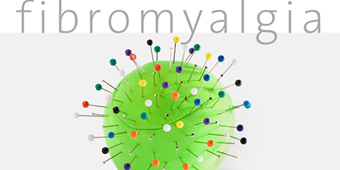- Cardiology And Vascular Health
- Health Topics
- Heart Health
- Irregular Heart Rhythms
- Stroke And Other Vascular Diseases
WATCHMAN Device Could Be the Right Treatment For Your AFib

Answer a few questions and we'll provide you with a list of primary care providers that best fit your needs.
Atrial fibrillation (AFib) is a common heart rhythm problem, and a device called the WATCHMAN™ can be an important treatment option for some people.
AFib causes a chaotic heart rhythm that is irregular and usually fast. The condition causes your heart to function ineffectively, which leads to heart palpitations and shortness of breath, says Sandeep Gupta, MD.
AFib symptoms could also include:
- Chest pain
- Extreme fatigue
- Irregular heartbeat
- Lightheadedness
“The risk factors for AFib would be age, many elderly people, then high blood pressure, then any other heart disease, such as coronary artery disease or vascular heart disease,” Dr. Gupta says. “And then there are some non-cardiac factors, such as thyroid problems, and there is a significant genetic component now.”
Having AFib can cause some quality of life issues, says Dr. Gupta, because you’re not always able to do what you want to do. The internal feeling of your irregular heartbeat can be nagging and become frustrating.
Becoming short of breath and tired easily and having to continually take medication can also affect your quality of life.
Treatments And Risks
Medication has been used as the most common AFib treatment to help keep your heart from beating too fast.
Because AFib can also increase your stroke risk, it’s usually also recommended you take blood thinners .
“(With blood thinners), you can be trading one problem for the other,” Dr. Gupta says. “The blood thinners would increase your risk of bleeding, which could be spontaneous bleeding or bleeding triggered by injuries.”
Internal bleeding is the most significant concern, especially if it’s within the brain, because that also has the potential of causing a stroke.
The WATCHMAN Device
The WATCHMAN is a mechanical device that also can be used as a treatment for AFib.
The device is like an umbrella that is inserted into the left atrial appendage heart chamber. The purpose is to seal off this part of the heart from the rest of your circulation.
“Stroke that is related to atrial fibrillation is caused by a blood clot that forms in the heart and then can travel to the brain to give you a stroke,” Dr. Gupta says. “The area in the heart where the blood clots would form is the left atrial appendage.”
By having the WATCHMAN implanted, you’ll lessen your risk of stroke without having to take blood thinners long-term.
The device can benefit almost all AFib patients, except patients with a valve problem called mitral stenosis. It hasn’t been evaluated for use yet with those patients.
The benefits of the WATCHMAN device are significant for patients because they can live their lives without the concerns that come along with blood thinners.
But the device also comes with some risks.
“It’s an invasive procedure, so any invasive procedure comes with procedural risks, which are probably around a one percent risk of complications during the procedure,” Dr. Gupta says. “The long-term risks are minimal, if any.”
To learn more about atrial fibrillation, talk to your doctor or health care provider or search for a provider.
Answer a few questions and we'll provide you with a list of primary care providers that best fit your needs.
Source: Sandeep Gupta, MD, Middletown Cardiology Associates





